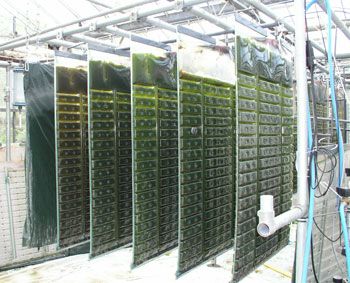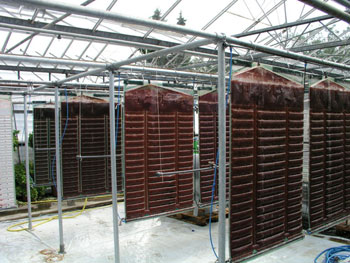The red pigment astaxanthin is produced with the algae Haematococcus pluvialis. Astaxanthin is used as a supplement in aquaculture in fish- and shrimp-feed in order to enhance the pink color of shrimp, salmon and trout meat. Astaxanthin belongs to the carotenoids and its chemical structure is similar to beta-carotene. Numerous scientific publications attest astaxanthin with a higher antioxidative potential than vitamin E.
It has also beneficial properties for both the cardiovascular system and human eye function. Hence astaxanthin, in the form of capsules, is taken as a dietary supplement, mostly in Japan and the USA, but also increasingly in Europe.
A further application of astaxanthin is as a red pigment by the cosmetics industry. Fraunhofer IGB can produce astaxanthin economically in photobioreactors specifically designed for mass cultivation of algae. The production process is scalable and can be dimensioned according to customer-specific applications.
 Fraunhofer Institute for Interfacial Engineering and Biotechnology IGB
Fraunhofer Institute for Interfacial Engineering and Biotechnology IGB
